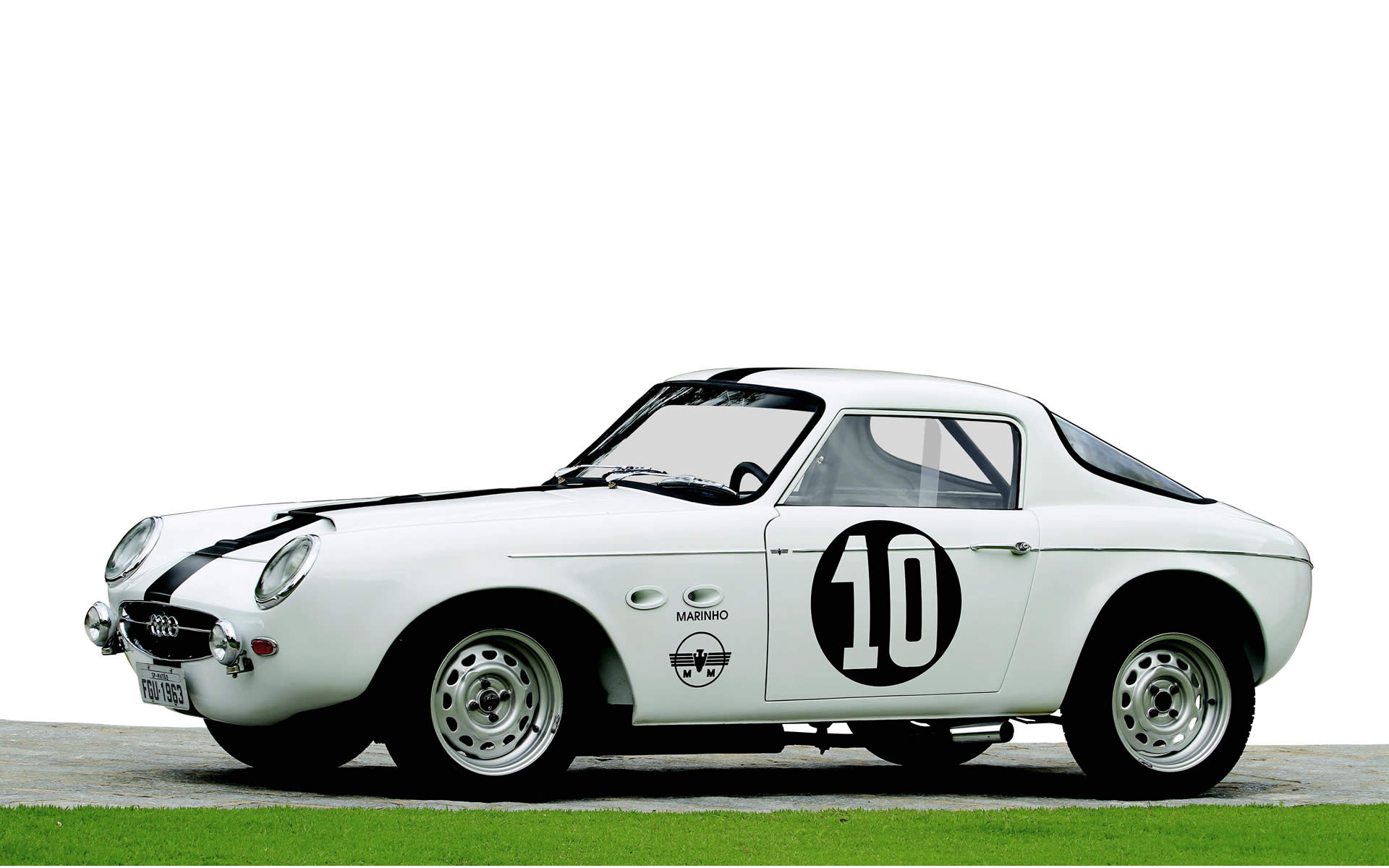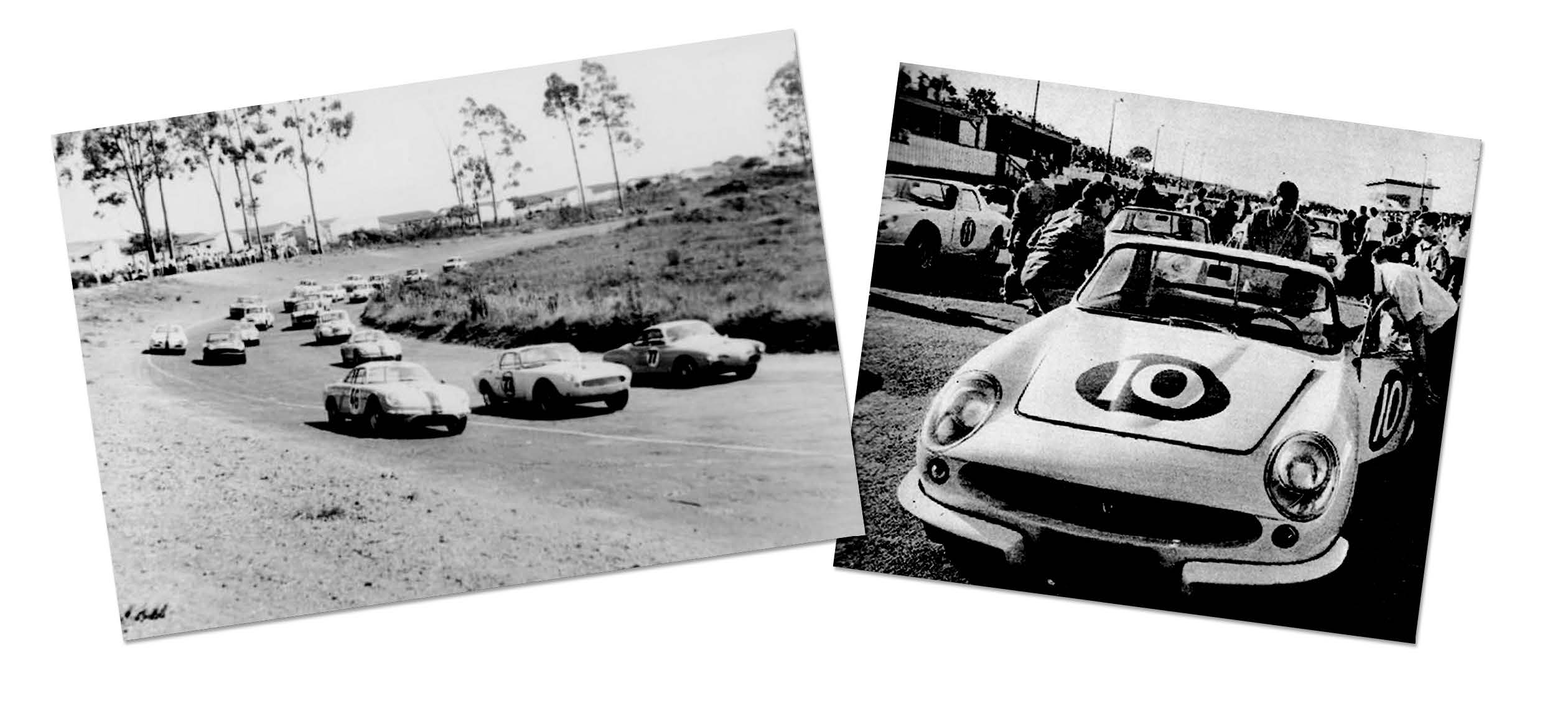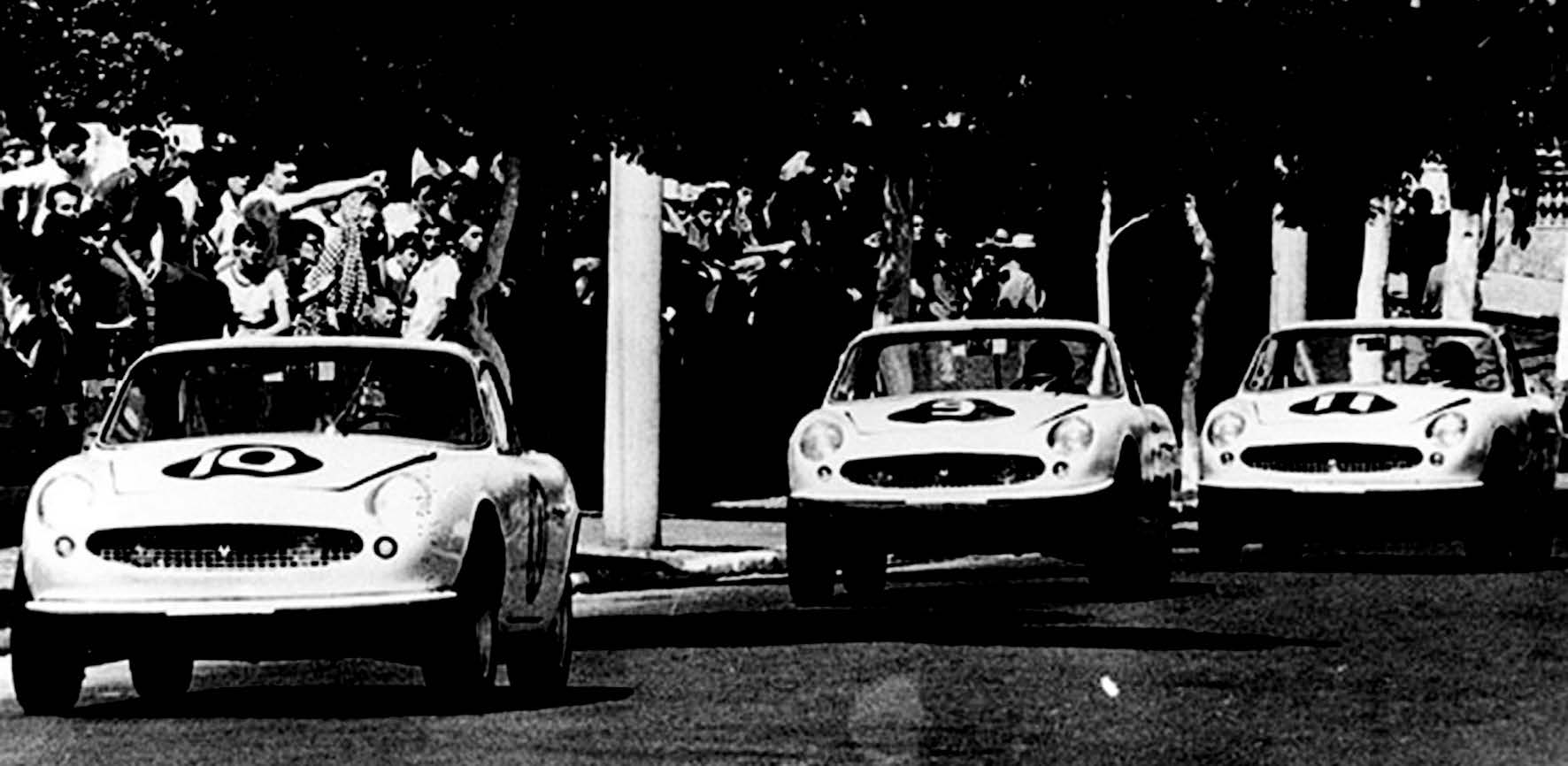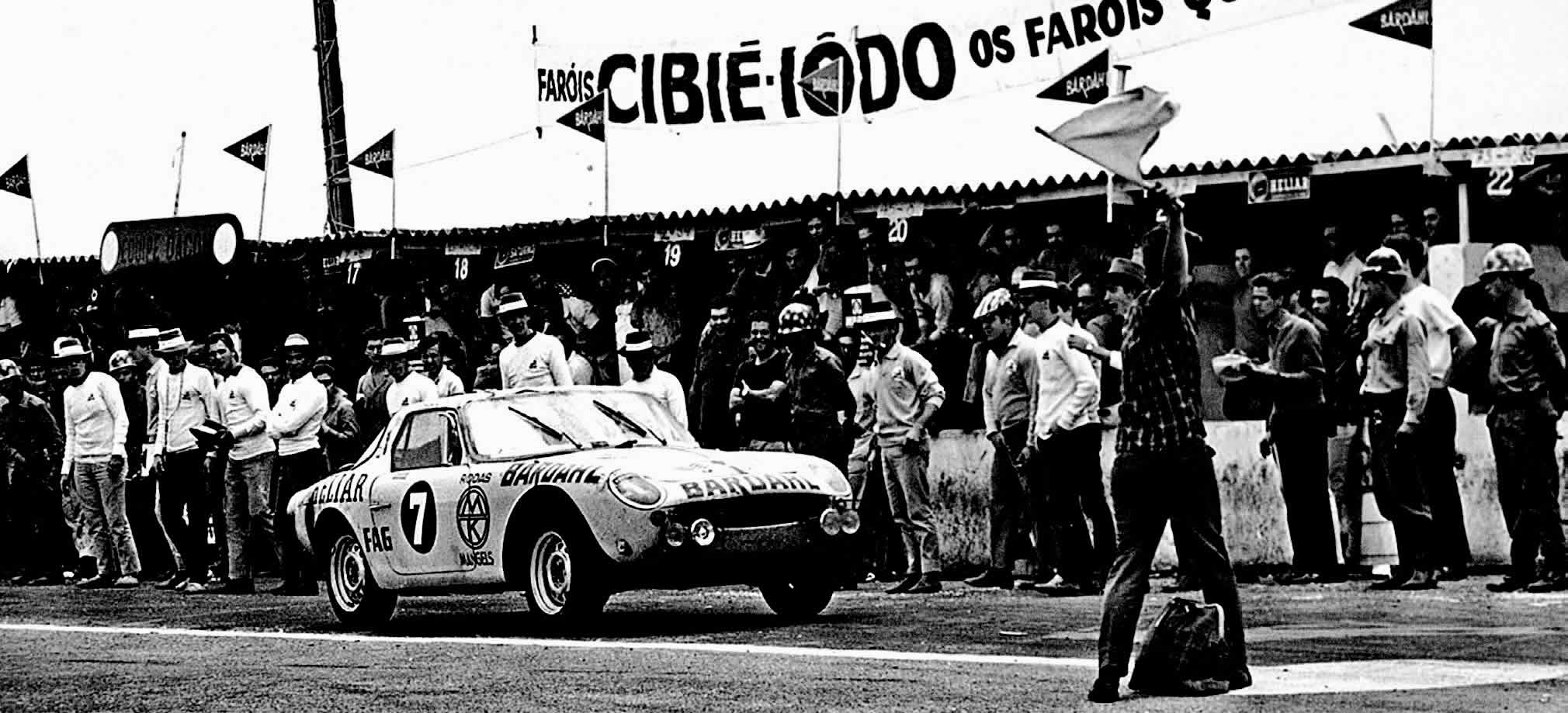Born to race
The first three units of the Malzoni GT were ordered by the Vemag Team with the clear purpose of competing in car races. Soon they were standing out on the race tracks. The success on the race tracks translated into an increased number of orders which demanded the creation of a structure that would enable the manufacturing of more cars and fulfill the demands of the market.
The 1960´s, when the Malzoni GT was created, became famous as the golden years of the Brazilian auto racing. They were marked by a kind of rivalry that existed among the brands that had recently settled in the country. These brands included WILLYS (Renaults and Interlagos), SIMCA and FNM (JK and Alfa Romeo, besides DKW itself). Unofficially, VW was also part of this competition with the Karmann-Ghia Porsche from the dealership Dacon.
Among all of them, the Vemag Team stood out as the fiercest of all. The DKW had a front-wheel drive ,unusual in those days, which afforded it advantage on street courses and in the rain as well. However, the engines developed only 50CV as standard. Even if the team could eventually improve their engines to achieve more power, like 100CV for instance, the cars were heavy, which affected negatively their speed on straight tracks.
Being lighter and with better aerodynamic lines, the Malzoni GT brought new perspectives for the team. Type II, with its steel body, was the turning point in the team´s history. On July 19, 1964, in the ABCAT Six Hour Race at Interlagos, São Paulo, Marinho came in fifth place. But, the car broke. On the following week, the Malzoni GT put on a show on the street course of Barra da Tijuca, in Rio de Janeiro, dueling with the powerful Karman-Ghia Porsche. However, once again, it did not complete the race.





